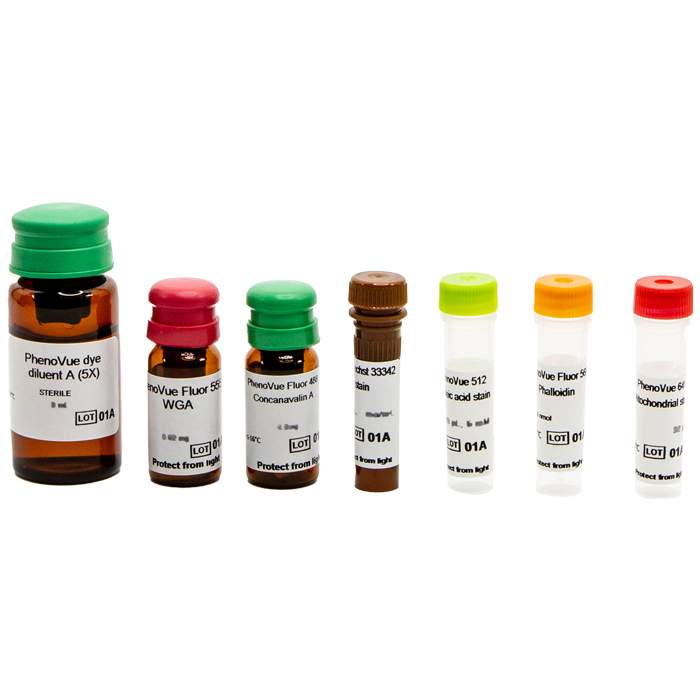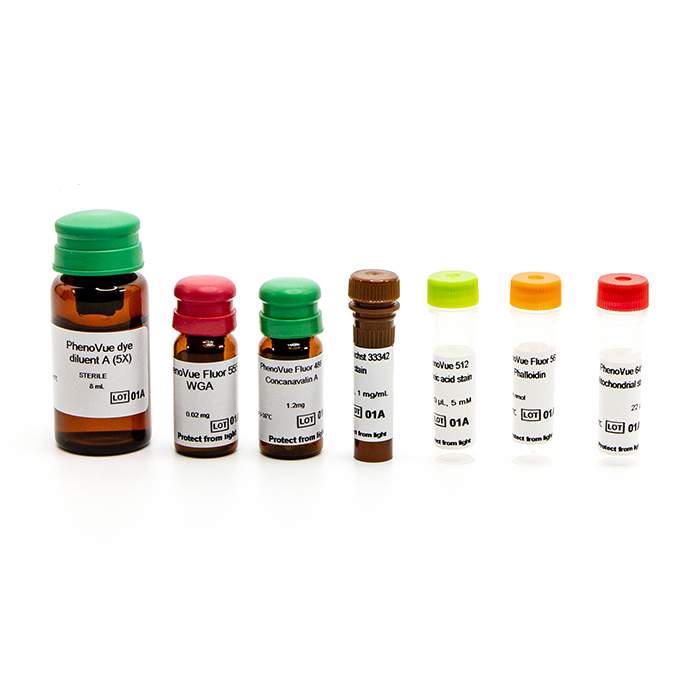

Filters
1 - 2 of 2 Products and Services
PhenoVue™ Cell Painting JUMP Kits comprises 6 validated, pre-optimized fluorescent probes, in accordance with the JUMP consortium protocol v3, and associated diluent to streamline the cell painting workflow.The kits offer excellent batch-to-batch reproducibility, are supplied with a step-by-step protocol, and are available in a range of pack sizes to match your throughput requirements.PhenoVue Cell Painting JUMP kits are validated for use on high-content screening systems such as the Opera Phenix® Plus system.View our extensive validation data in the Product Information Sheet within the Resources tab below.
PhenoVue™ Cell Painting Kits comprise 6 validated, pre-optimized fluorescent probes, and associated diluent to streamline the cell painting workflow.The kits offer excellent batch-to-batch reproducibility, are supplied with a step-by-step protocol, and are available in a range of pack sizes to match your throughput requirements.PhenoVue Cell Painting Kits are validated for use on high-content screening systems such as the Opera Phenix® Plus system.View our extensive validation data in the Product Information Sheet within the Resources tab below.































